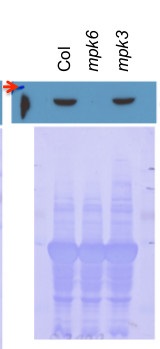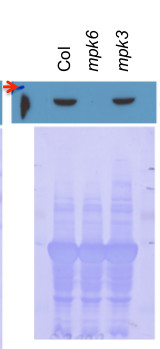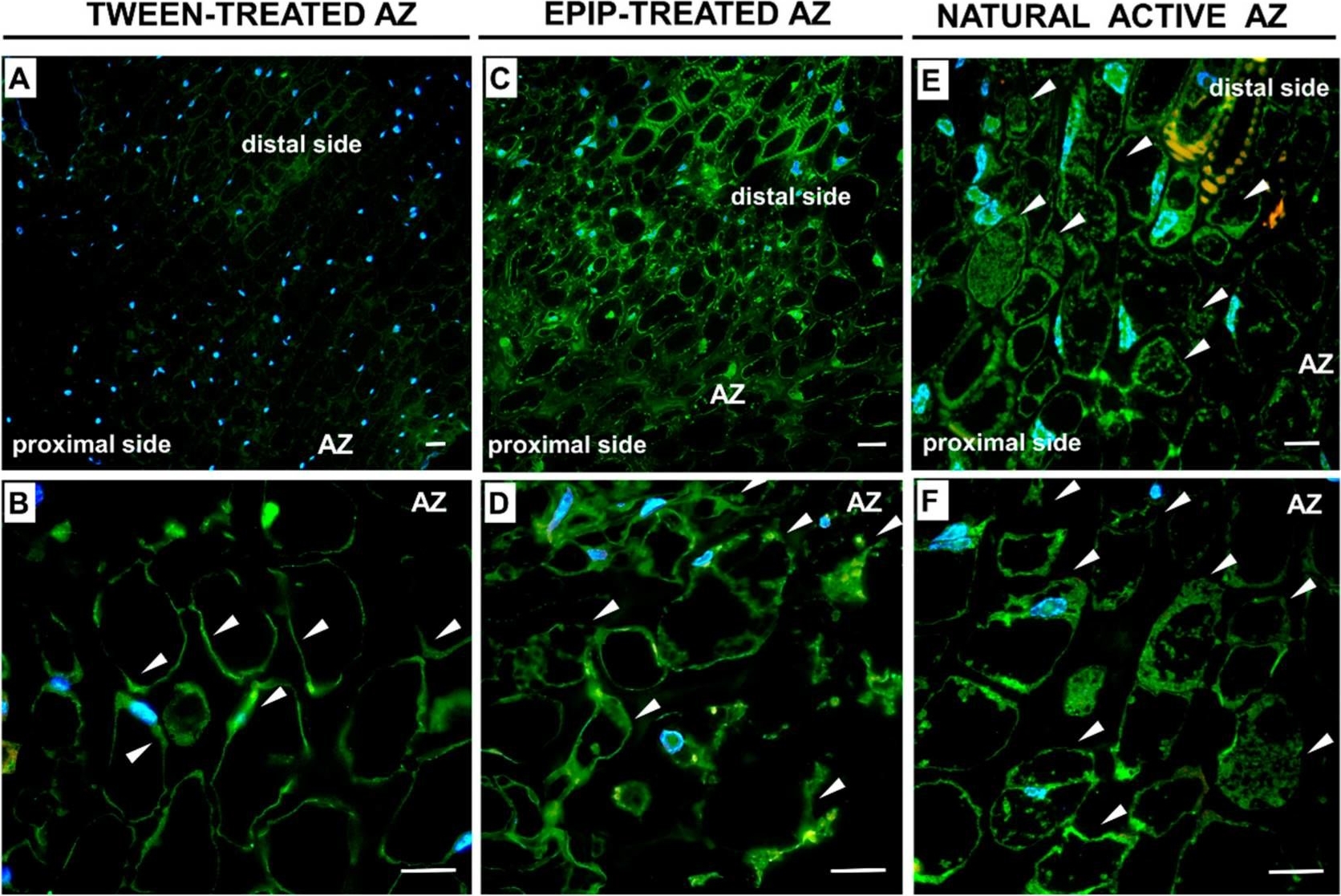1

Anti-MPK6 | Mitogen-activated protein kinase 6
AS12 2633 | Clonality: Polyclonal | Host: Rabbit | Reactivity: Arabidopsis thaliana
- Data sheet
-
- Product Info
-
Immunogen: KLH-conjugated synthetic peptide derived from Arabidopsis thaliana MPK6 protein, UniProt: Q39026, TAIR: At2g43790
Host: Rabbit Clonality: Polyclonal Purity: Immunogen affinity purified serum in PBS pH 7.4. Format: Lyophilized Quantity: 50 µg Reconstitution: For reconstitution add 50 µl of sterile water Storage: Store lyophilized/reconstituted at -20°C; once reconstituted make aliquots to avoid repeated freeze-thaw cycles. Please remember to spin the tubes briefly prior to opening them to avoid any losses that might occur from material adhering to the cap or sides of the tube. Tested applications: Western blot (WB) Recommended dilution: 1 : 1000 (WB) Expected | apparent MW: 45 kDa
- Reactivity
-
Confirmed reactivity: Arabidopsis thaliana Predicted reactivity: Brassica napus, Gossypium mexicanum
Species of your interest not listed? Contact usNot reactive in: Lupinus luteus, Marchantia polymorpha, Picea abies, Solanum tuberosum - Application Examples
-
Application example

0.2g of 21 days old Arabidopsis thaliana leaf tssue C=Col, 6= mpk6 (T-DNA mutant), 3= mpk3 (T-DNA mutant) was homogenized with 250 μ l Buffer A( 50 mM Tris – HCl pH 7.5, 0.33 M sucrose, 5 mM EDTA, 150 mM NaCl , complete protease inhibitor cocktail). The crude extracts were subjected to centrifugation at 10 000 g for 10 min to pellet the insoluble material. Material was extracted with 250 μl of Buffer A (50 mM Tris – HCl pH 7.5, 0.33 M sucrose, 5 mM EDTA, 150 mM NaCl, complete protease inhibitor cocktail). The crude extracts were subjected to centrifugation at 10 000 g for 10 min to pellet the insoluble material. Supernatant (120 μ L)+ 4XSDS sample buffer 40 μ L= 200 μ L samples ↓ 95 °C 5min 10 μ L were separated on 10 % SDS-PAGE and blotted 1h to PVDF using semi-dry transfer. Blots were blocked with skim milk for 1h at room temperature (RT) with agitation. Blot was incubated in the primary antibody in TBS-T at a dilution of 1: 10 000 for 1h at RT with agitation. The antibody solution was decanted and the blot was rinsed briefly twice, then washed once for 15 min and 3 times for 5 min in TBS-T at RT with agitation. Blot was incubated in secondary antibody (anti-rabbit IgG horse radish peroxidase conjugated, from Agrisera AS09 602) diluted to 1:75 000 in for 1h at RT with agitation. The blot was washed as above and developed with chemiluminescence according to the manufacturer's instructions.
Courtesy of Chika Tateda, University of Chicago, USA
Application examples: 
Reactant: Lupinus luteus (European yellow lupine)
Application: Immunocytochemistry
Pudmed ID: 33809409
Journal: Int J Mol Sci
Figure Number: 2A,B,C,D,E,F
Published Date: 2021-03-16
First Author: Jasieniecka-Gazarkiewicz, K.
Impact Factor: 6.009
Open PublicationImmunolocalization of MPK6 in the flower AZ of yellow lupine in response to EPIP treatment and the naturally active AZ. EPIP peptide solution (100 µM) in 0.05% Tween 20 was applied directly on inactive AZ and the plant material was collected 6 h after treatment (C,D). Inactive AZ was harvested 6 h after 0.05% Tween 20 solution application (A,B). MPK6 was also localized in the naturally active AZ (E,F). Photos B, D, and F are magnifications of AZ regions used for analyses presented on A, C, and E. Bar—60 µm (A), 100 µm (B), 40 µm (C–F). Immunofluorescence, green signal indicates MPK6 presence. Nuclei were stained with DAPI (blue fluorescence). Arrows mark signal for MPK6 in the peripheral areas of the cytoplasm (B) and in the cell cytosol after cell division (D–F). Yellow and orange color corresponds to the cell wall autofluorescence.
- Background
-
Background: MPK6 (Mitogen-activated protein kinase 6) is involved in oxidative stress-mediated signaling cascade, in the innate immune MAP kinase signaling cascade (MEKK1, MKK4/MKK5 and MPK3/MPK6) downstream of bacterial flagellin receptor FLS2. Activated in response to touch, wounding, low temperature, low humidity, salt stress, hydrogen peroxide, ozone, ACC (an ethylene precursor), jasmonic acid (JA), mastoparan and UVC. Activated in response to elicitors: oligogalacturonides, hexameric chitin fragments, fungal xylanase, and the bacterial flagellin and harpin. Synonymes: MAP kinase 6, AtMPK6. - Product Citations
-
Selected references: Butler et al. (2019). Soybean resistance locus Rhg1 confers resistance to multiple cyst nematodes in diverse plant species. Phytopathology. 2019 Aug 12. doi: 10.1094/PHYTO-07-19-0225-R.
Wang and Auwerx (2017). Systems Phytohormone Responses to Mitochondrial Proteotoxic Stress. Mol Cell. 2017 Nov 2;68(3):540-551.e5. doi: 10.1016/j.molcel.2017.10.006. - Protocols
-
Agrisera Western Blot protocol and video tutorials
Protocols to work with plant and algal protein extracts
Agrisera Educational Posters Collection - Reviews:
-
This product doesn't have any reviews.


